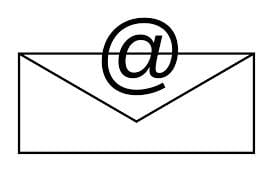Image attribution: http://www.make4fun.com/
Why can't I get anybody to try this one particular job search strategy? I know a lot about the best ways for my clients to get jobs. I've been writing about them for years. I've coached a lot of clients in job search. I've even had a book published by Happy About on the subject. But, for the life of me, I can't get ANY of my clients to try a strategy that has worked amazingly for at least two of my colleagues! It doesn't matter how persuasive I think I'm being!
To be fair, my clients are getting jobs way faster than average without this method. But, imagine their choices if they actually DID THIS ONE THING! Can you hear the frustration in my writing voice?
Here's where I've come to on this: I am offering to write FOR FREE a value proposition letter (VPL) for any of my current and prospective clients who commit to trying this method! I'm so hesitant to tell you what it is for fear that your mind wil just shut down on it. But, here goes...
Execute a direct mail campaign - that's right - a snail mail campaign, with stamps and all - to decision-makers at companies you directly target. Select 30-50 companies and mail them a value proposition letter (VPL). This has worked for 5- to 7-figure earners. Or, try a letter to 5K-10K companies, as the late coach Mark Hovind, who authored this method and worked with $300k+ clients, found successful. Still with me? Here's why it works:1. Getting your value proposition in front of the CEO or other C-level gives them a chance to be intrigued by you as a solution to their company's problem, pain, challenge, etc. They get a chance at hiring someone really good for the job!
2. This method bypasses HR, which is, in most cases, a good thing, at least initially. Because HR's job is, in part, to rule people out - not rule them in - and to color between the lines (select only candidates who most closely match the job description/keywords). I'm not dissing HR here, just acknowledging that the flood of resumes recieved requires some brutal method of paring down the numbers. However, this doesn't always result in the best person for the job (maybe YOU!) who can bring awesome accomplishments, creativity and spirit to the job.
2. Sending a VPL alone, without your resume, actually works better than sending a resume with the letter. Why is this? When an executive receives a resume, s/he knows to route it to HR. A letter alone demands to be read on its merits. Sending a VPL letter is a KISS (Keep It Simple Stupid!) method. Done right, it motivates the line-of-authority decision maker to contact you. I say this even though I am a resume writing professional :)
3. Sending a letter by US Mail (or or USPS priority mail or FedEx or UPS overnight delivery) is effective simply because it is LOW-tech! Emailing has a low chance of success. Faxing has worked for some but is going the way of the dinosaur. Picture an executive receiving a Priority Mail envelope directly addressed to him/her in one of those white envelopes. Hmmm, probably worth an open.
So, what makes a great VPL?
- Addressed to the decision-maker by name
- Is short - 150-200 words
- Expresses your value proposition
- Gives 1-3 examples of the results you've produced
- Mentions something you can deliver relevant to the target company
- Suggests you talk
- Says you'll contact the person shortly to see if s/he is interested
- Includes a PS that is intriguing - perhaps an expression of your brand or a link to your LInkedIn profile or website
To find out more, please visit Mark Hovind's website, which his wife, Cheryl, has kindly left up since he passed away. And here is his example of a VPL:
http://jobbait.com/JobBaitSampleLetter.pdf
Thanks, also, to Mary Elizabeth Bradford, who gave a recent teleseminar on the subject to Career Directors International. Find out more about her Job Search Success System: http://www.maryelizabethbradford.com/ here.
Will my last ditch attempt to get my clients to try the Direct Mail Campaign work? I'll let you know! I'll have the answer in my next eNewsletter. Why not give this direct mail method a whirl?
PS Please tell you if you did and what they results were. It would do wonders for my self-esteem as a job search coach :) JC

 I
I image attribution: Asktheheadhunter.com
image attribution: Asktheheadhunter.com






 Wondering how much recruiters are using social media to source and vet candidates? Thinking you need to get more active in social networking to grow your career?
Wondering how much recruiters are using social media to source and vet candidates? Thinking you need to get more active in social networking to grow your career?
